Glyko Bergamonto or Bergamot fruit preserve is one of the most delicious and aromatic Greek fruit preserves (glyka tou koutaliou in Greek).
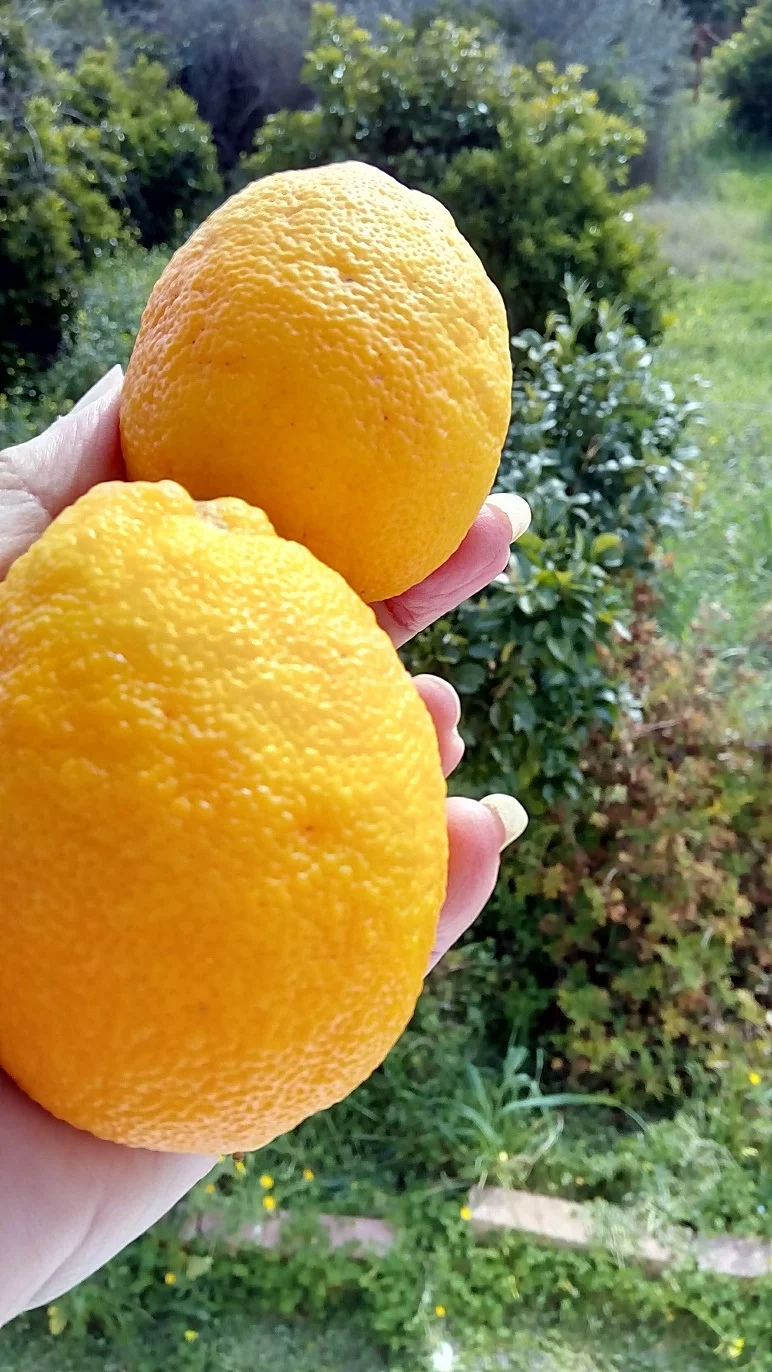
Bergamots (Citrus Bergamia) can be found in Greece, Cyprus, Italy, and other Mediterranean countries.
Bergamot originated in Asia and is a small tree with long, oval green leaves with white flowers, which blossom during the spring.
The bergamot bears a small fruit which matures early January and is about the size of an orange.
Ιt’s shape is between an orange and a big lemon and it’s colour looks more like an orange and it is very aromatic.
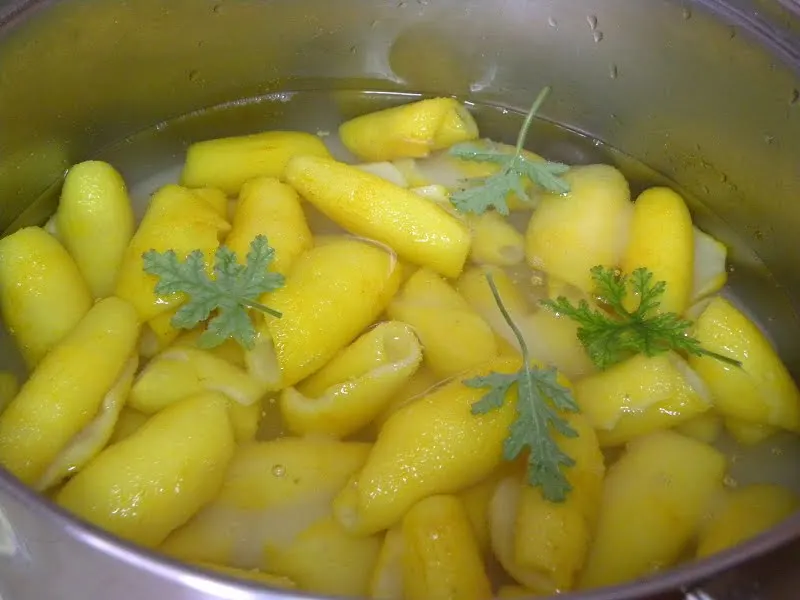
The fruit is not edible raw as it is very sour, but an essential oil is extracted from the aromatic peel of this sour fruit which is used to flavour confectionery.
We can also make marmalade with its peel and flesh, as well as liqueur. You can also use its zest in cakes and cookies.
I love adding frangrant geraniums when making the preserve because they add a lot of flavour to the syrup.
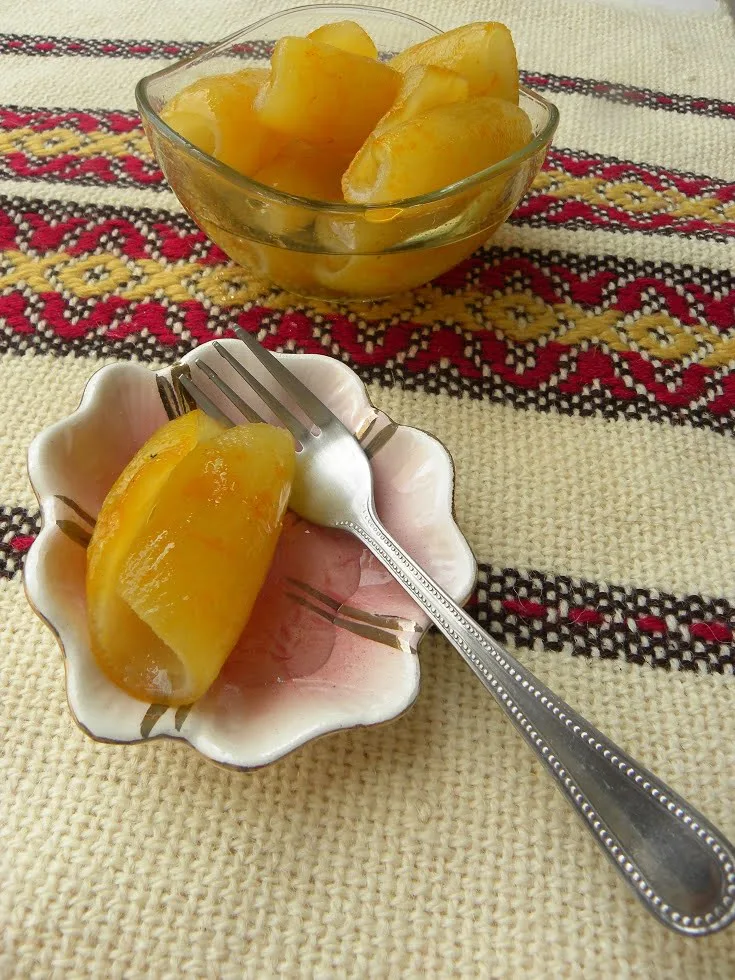
The spoon sweet (preserve) is ideal for eating it as it is, with Greek yoghurt, on top of tarts or other desserts and puddings.
See also some of the desserts I have made with bergamots:
Marshmallows, Bergamot Birthday Cake
My Birthday Cake with Bergamot and White Chocolate
The Perfect Marbled Chocolate Bergamot Cake
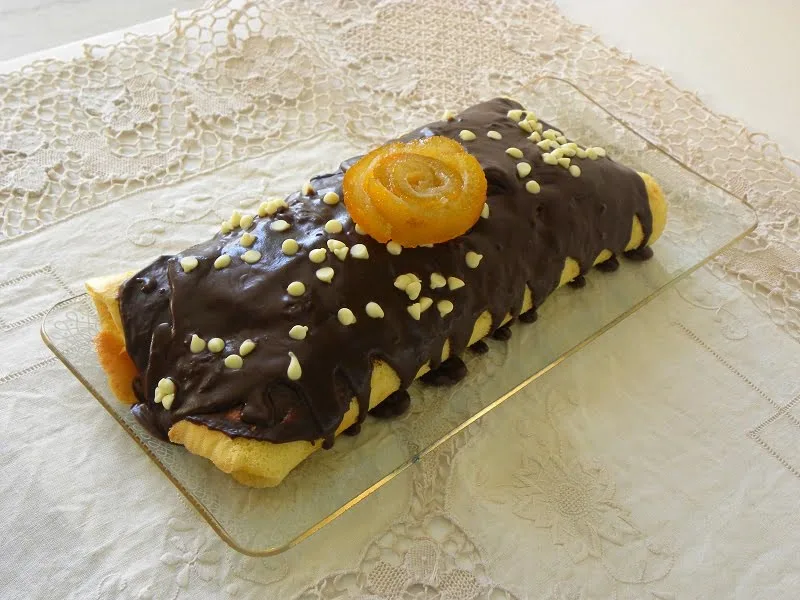
Of course, there is always lots of leftover bergamot zest.
As I do not want the bergamot zest to go wasted, some of it is put in ice cubes and in the freezer to be used in desserts.
I use the remaining to make a bergamot liqueur.
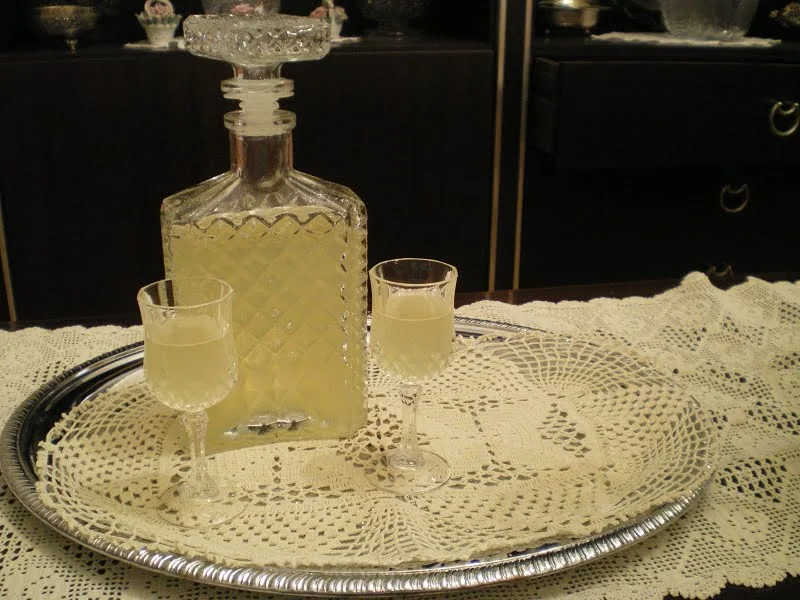
You can follow the same procedure how to make bergamot liqueur, following the same method used for the orange liqueur I made recently.
However, the more time you let the zest or peel steep in the alcohol, the better, as more flavour will be extracted.
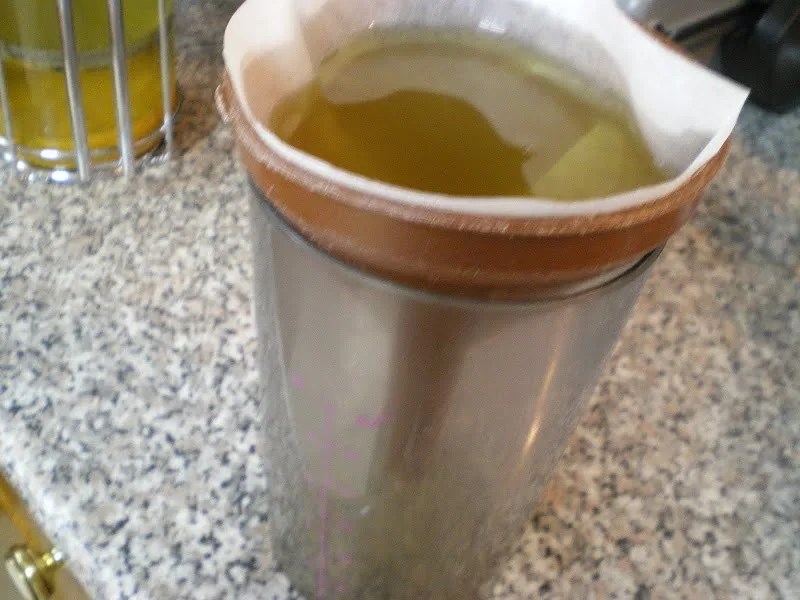
You can also follow the method for the Mandarin Liqueur or Limoncello.
The easiest liqueur I have made is the Espresso Cherry Liqueur in Five minutes, using leftover cherry syup.
However, you can also make a Cherry Liqueur by using only the pits and in this post you will find lots of information about liqueur making.
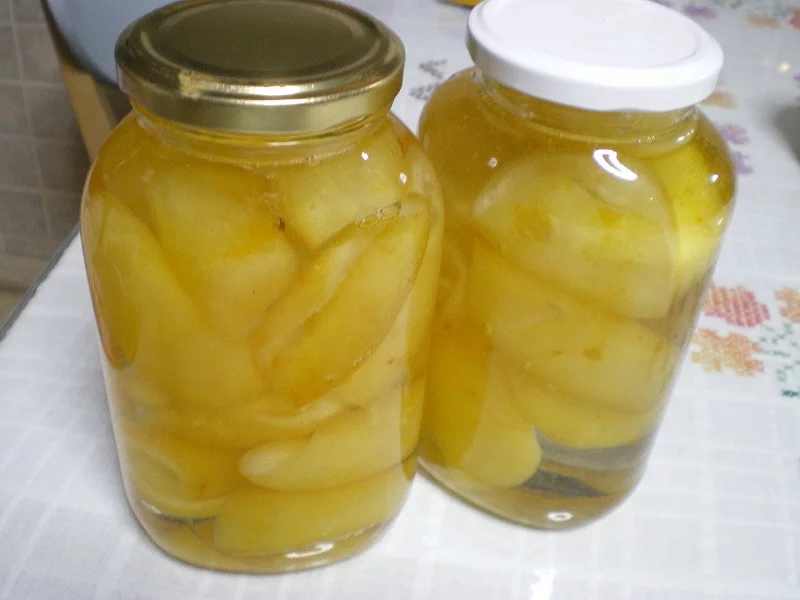
How to Make the Preserve Glyko Bergamonto
Use organic fruit. Select fruit which are not bruised and the skin is easy to grate.
After grating the zest, you can put it in ice cubes to freeze it. Use it to flavour cakes or other desserts. You can also make a liqueur with the zest.
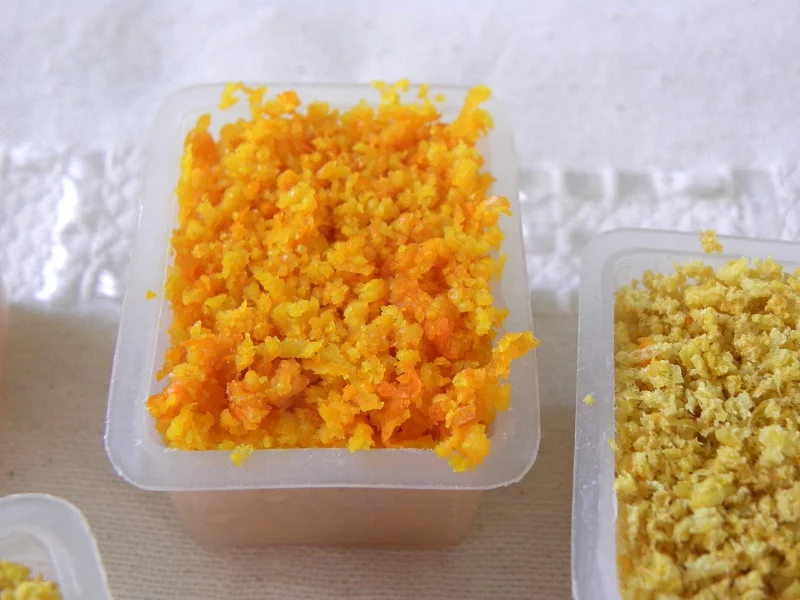
Depending on how big the bergamots are cut them into 3 – or 4 equal segments.
Do not discard the flesh but use it to make marmalade.
The traditional way of making citrus peel into a preserve is the shape it into a roll. However, you do not necessarily have to roll it but just cut the peel into smaller pieces.
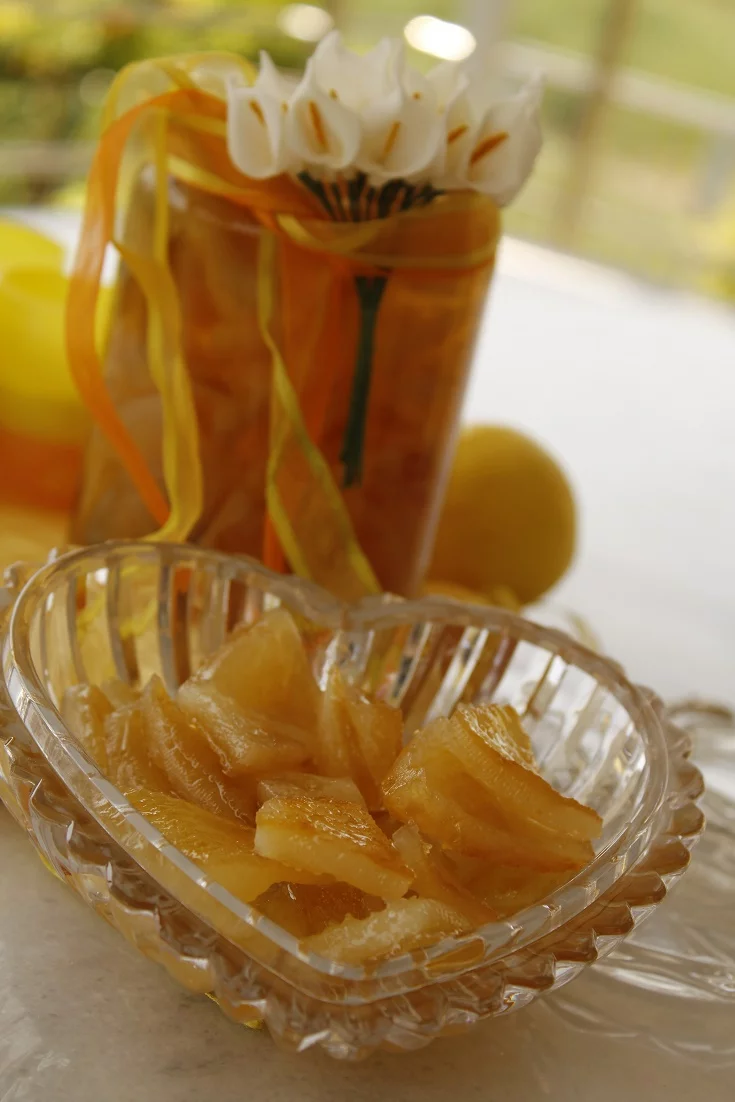
Remove as much pith as possible and roll it. You can secure it with a toothpick or you can thread each roll together.
The fruit peel is bitter, so you have to blanch it several times, following this procedure: Simmer the peel for 2 – 3 minutes. Let it cool and change the water.
Repeat the process several more times, to remove the bitterness.
Drain the peels, remove the toothpick and the peel is now ready to be used in the recipe.
The ratio of sugar to be use is calculated before the blanching. Weigh the peels and use the same amount of sugar.
As the peels will not extract any juices before blanching, we must also add the same amount of water to make the syrup.
The addition of fragrant geranium leaves is optional but if you have some add them, as they will add a lovely flavour to the syrup.
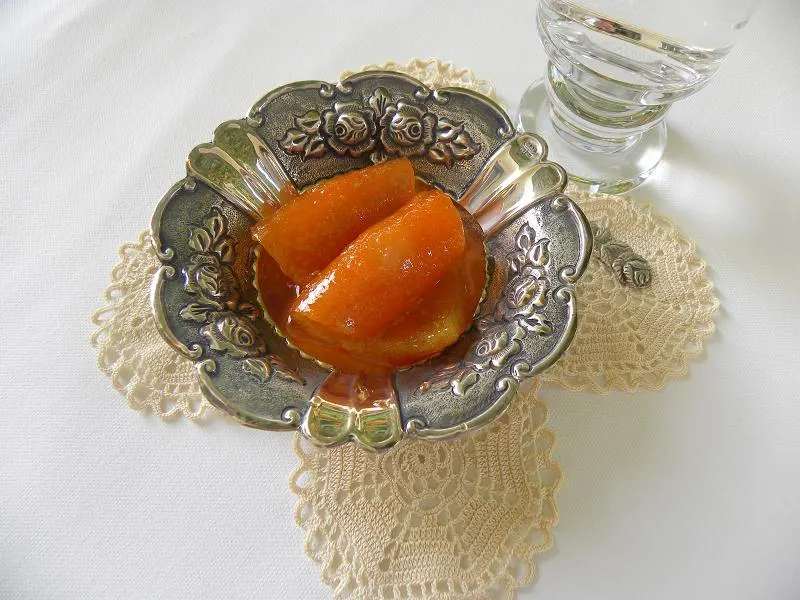
Besides bergamots, you can use this method to make preserves with oranges, especially bitter (Seville) oranges, lemons, grape fruit, pomelo, or other citrus fruit with thick peel (not mandarins or kumquats).
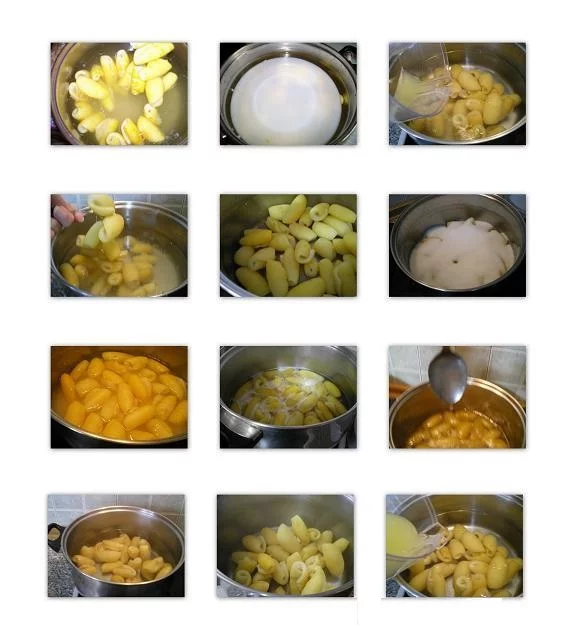
Please also note that the calories mentioned for each piece of bergamot preserve is not real as the calculator is also calculating all the sugar used to make the syrup, which of course we don’t eat with the preserve!
What to do with the leftover syrup?
Τhe leftover syrup is so delicious and aromatic that I always add more sugar and water (ratio 1:1) to have more leftover to use in recipes which need some syrup.
When the bergamot spoon sweet is eaten, the leftover syrup is ideal for wetting sponges, or lady fingers, to add in puddings instead of sugar or to substitute syrup, to make jelly (jello) or in any desserts with syrup.
Think of Baklavas, Galaktoboureko, Revani, Ekmek, Kantaifi, Daktyla, halvas etc. having the flavour of Bergamot!
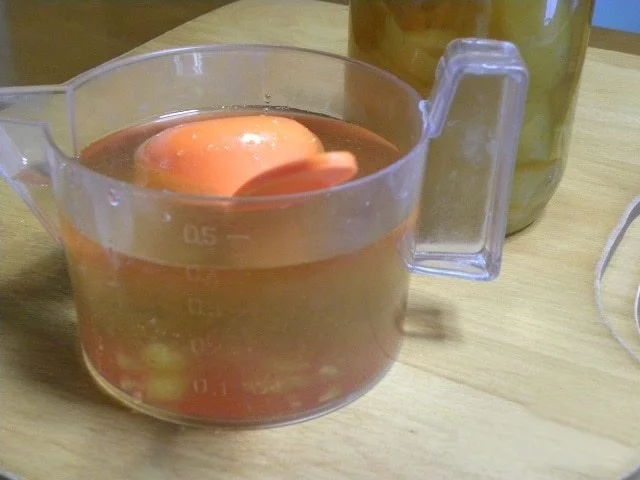
Before Making the preserve, read these articles as well:
Glyka tou Koutaliou or Spoon sweets
How can we tell if the syrup is ready?
Fixing spoiled spoon sweets
Update: 15 January, 2015:
A few days ago my daughter asked me to make this preserve which is her favourite.
I bought some lovely bergamots at the farmer’s market on Tuesday.
However, she was leaving to the U.K. for her Erasmus program on Friday morning, so I had to have it ready by Thursday evening.
To speed up the procedure for removing the bitterness I changed the water about 6 times a day, (morning, noon and evening).
At the end of the last time (noon of Thursday), after trying a piece to see if the peel was no longer bitter, I boiled the preserve.
The syrup is ready when the thermometre reaches 105o C or see the traditional method.
I added the lemon juice and bottled the preserve once it cooled.
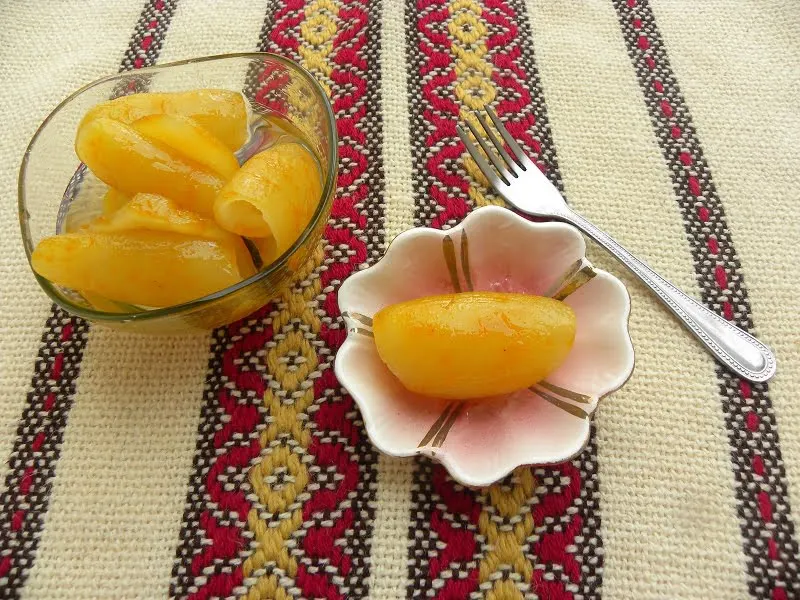
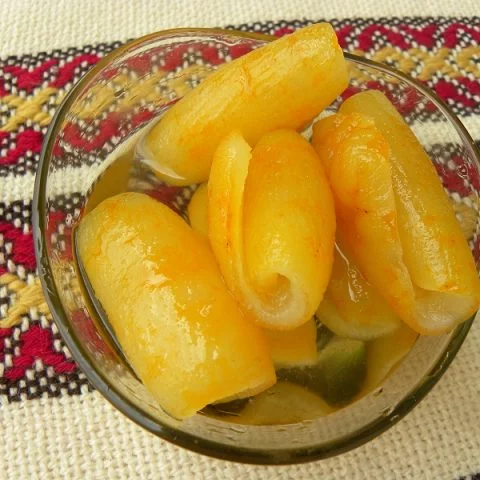
Glyko Bergamonto (Bergamot Fruit Preserve)
Glyko Bergamonto or Bergamot fruit preserve is one of the most delicious and aromatic Greek fruit preserves (glyka tou koutaliou in Greek).
Ingredients
- 7 bergamots (about 1200 grams - 2.65 lbs peels)
- 1200 grams sugar
- 3 cups water
- 1 lemon, only the juice
- 3 - 4 fragrant geranium leaves (optional)
- 1/4 cup lemon juice
Instructions
- Wash the bergamots, wipe them and using a fine kitchen grater, grate until the peel becomes bright yellow.
- Once you have scrubbed all the bergamots, cut a small piece off the top and the bottom and with a sharp knife score the peel into three or four equal sections, depending on the size.
- Using the tip of the knife, gently remove the fruit inside. (Do not discard the inner part as you can use it to make marmalade)
- From the peel you must now remove as much white pith as possible.
- Now is when you weigh the fruit and use the same amount of sugar.
- Thread a large sewing needle and make a knot at the end. Take each peel and roll it as tight as you can. Pass the needle through and thread each piece. An easier way to hold each rolled peel together, is with a toothpick for each piece.
- Place them in a large pot and cover them with water. As they will float put a plate on top of them to keep them submerged. Bring to boiling point only for 2 - 3 minutes and turn off the heat.
- Next day, empty water and add fresh water. Boil again for 2 - 3 minutes. Repeat this procedure three more days. On the last day after the boiling procedure, immediately empty hot water, add fresh cold water and half of the lemon juice. Put them back again on the heat and boil for 10 minutes. Remove from the heat and leave them in the hot water until it becomes cold. Drain them and remove the thread or toothpicks, carefully.
- Put them back into the pot again and add the sugar and the water. Leave it until the sugar dissolves and the water is extracted from the peels.
- Add the fragrant geranium leaves and bring to a boil. Lower heat to medium and boil for fifteen minutes. Remove from heat and leave it until the following day. The last day place them again on the heat, bring to a boil, then lower to a simmer and cover with the lid slightly ajar. Simmer, stirring and skimming occasionally, for about an hour, or until the syrup is ready.
- Finally add the remaining lemon juice, stir and leave it to cool completely.
- Store in clean and sterilized glass jars with a lid.
Notes
Note:
To make preserves with fruit that do not contain sugar, in this case the peels, the ratio sugar to fruit to water is 1:1:1 Weigh peels after grating them and add the same amount of sugar. We add less water because the peels will absorb water during the blanching process, which will later on be extracted when adding the sugar
Please also note that the calories mentioned for each piece of bergamot preserve is not real as the calculator is also calculating all the sugar used to make the syrup, which of course we don't eat with the preserve!
Nutrition Information
Yield 21 Serving Size 1Amount Per Serving Calories 229Total Fat 0gSaturated Fat 0gTrans Fat 0gUnsaturated Fat 0gCholesterol 0mgSodium 10mgCarbohydrates 59gFiber 0gSugar 59gProtein 0g
"These values are automatically calculated and offered for guidance only. Their accuracy is not guaranteed."
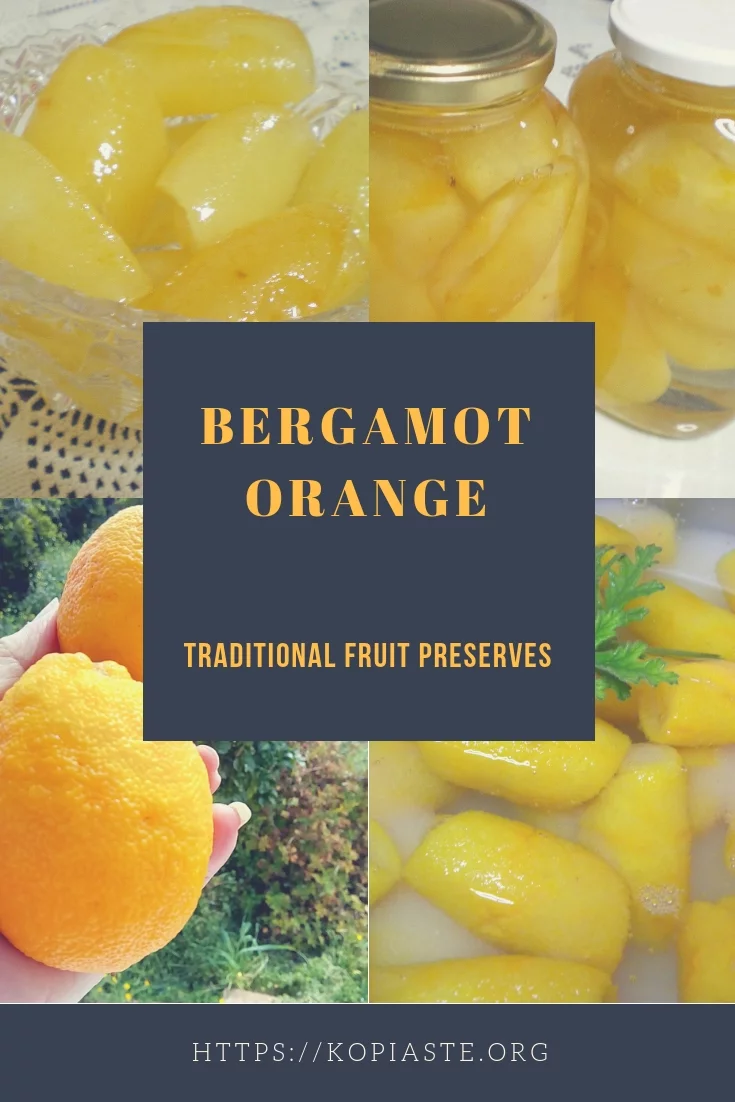
Kopiaste and Kali Orexi,

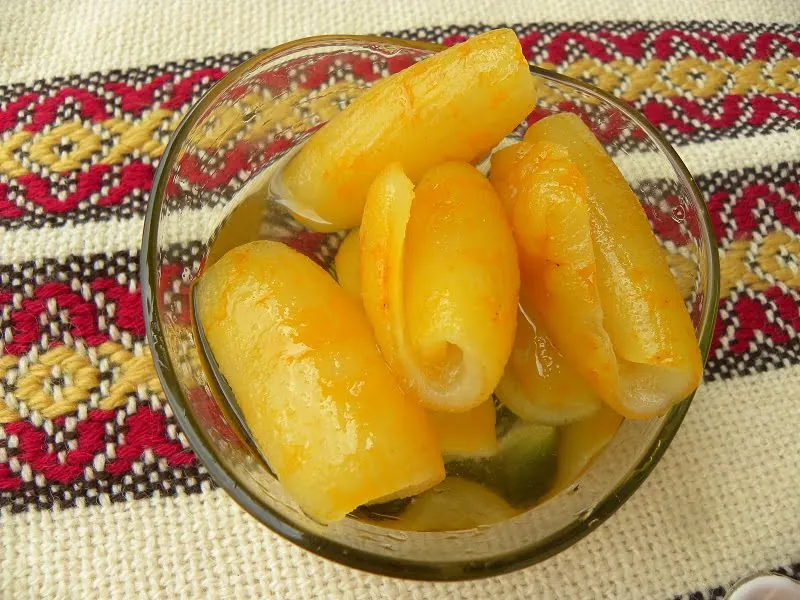
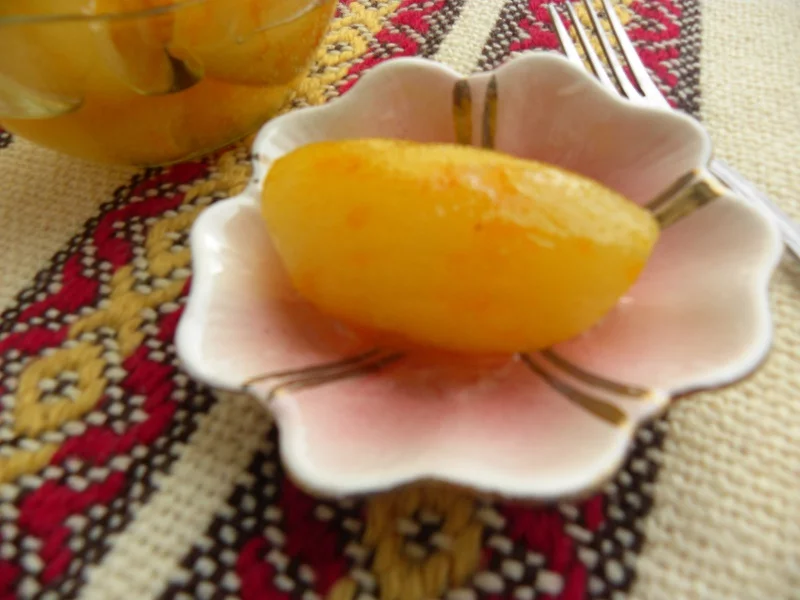

Kacie
Thursday 28th of January 2016
This is actually a really good concoction. the portioning is really great. Bergamots can sometimes be hard to find in stores but there are online stores that have them much cheaper and ships internationally
Martha Jones
Thursday 17th of December 2015
Bergamot is quite unknown to me. I felt pleased with your post. Would you mind giving more usages of it?
Bill
Thursday 13th of August 2015
Cool. Looks delicious! I wonder how that one taste like. I haven't tasted anything like that. Thank you for your wonderful photo.
Ivy
Monday 26th of May 2008
Hi Pixen. This is a winter fruit. I don't know exactly when but I found it sometime end of January - beginning of February and never seen it since.
pixen
Monday 26th of May 2008
Ola Ivy,
May I know where I can find this fruit in Athens? When is the best season? I was in Athens few months before learning of your blog...